Underwater Engineering Project: heading for the abyss
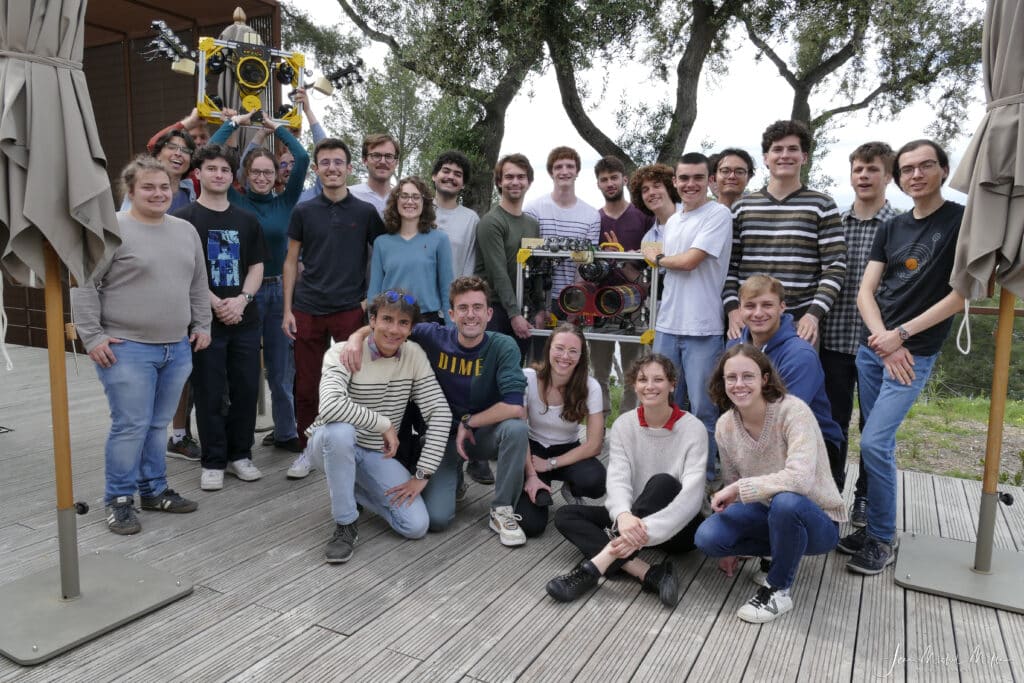

Since 2022, Mines Paris – PSL has been offering an educational program designed to enhance understanding of the challenges of blue engineering, the technological component of the blue economy. This program enables future engineers to confront major contemporary challenges. Over the three years of their Civil Engineering Cycle, students immerse themselves in specific themes for a few weeks at a time. In the first year, for example, they studied the detection of microplastics in the Mediterranean using satellite images. This year, they focused on detecting coral reef bleaching in French Polynesia. In the second year, training focuses for three months on data science and Artificial Intelligence. In 2024, students explored how acoustics can help understand the hunting behavior of dolphins, and worked on the principle of predictive maintenance using IoT (Internet of Things) data from sensors.
The Underwater Engineering Project, which took place from March 11 to May 6, 2024 at Sophia Antipolis on the Pierre Laffite campus of Mines Paris – PSL, brought together 26 second-year engineering students. Their challenge? Assess the contribution of underwater robotics to shipwreck preservation. Their objective was to design and develop two underwater robots remotely operated from the surface. Each robot was equipped with a payload to acquire images for the reconstruction of 2D and 3D scenes.
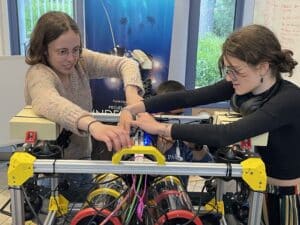
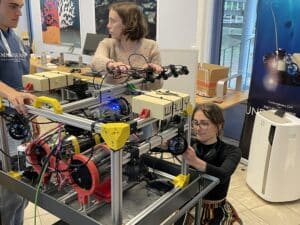
The project was supervised by an educational team from the Centre de Recherche sur les Risques et les Crises (CRC), comprising Sébastien Travadel, Luca Istrate, Samuel Olampi and Franck Guarnieri, and in partnership with Anne Joncheray, Director of the Saint-Raphaël Archaeological Museum, and Kevin Sempé, underwater videographer.
The challenges proposed are unprecedented and ambitious. The partnership with archaeologists and underwater videographers has boosted students’ motivation and commitment to a particularly original and noble cause. I’m convinced that these eight weeks of intensive courses have given rise to new vocations.
Franck Guarnieri, CRC Research Director
This module allowed students to immerse themselves in underwater robotics thanks to a 90 m² fab lab, where they were able to familiarize themselves with fluid mechanics, material cutting and electronic welding. The students were divided into three groups, including one dedicated to image processing. The two ROVs (Remotely Operated Vehicles), named Annie and Wall-Y, capable of reaching depths of 100 meters, explored the wreck of the Robuste II, a steamship sunk by a mine in 1943, in the Gulf of Juan-les-Pins (06).
At the end of the three months, the students had built two operational robots, fully meeting their objectives. The students’ achievements were presented on May 6 at the Espace Mer et Littoral, POSIDONIA, in Antibes Juan-les-Pins, to an enthusiastic audience of professionals.
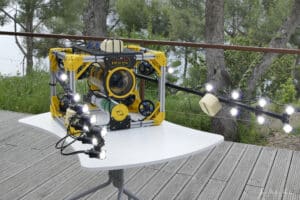
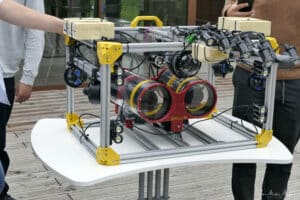
Hubert de Groote, ENS and Mines Paris double-degree student, shares his experience: “Making an underwater drone was a real discovery for me. I’m used to working on intangible projects, but the Underwater project enabled me to turn my ideas into reality: I was able to follow the manufacturing process of the 3D parts, from the computer to the printer to the robot. The project was really exhilarating and revealed a passion for me. I loved participating in the design of a drone in a high-impact, constrained engineering context.“
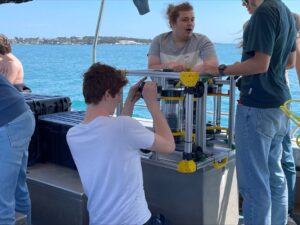
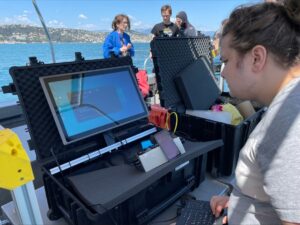
Marie-Anne Lacoste, a student on the project, also comments: “The Underwater project was extremely interesting and stimulating. It taught me how to manage a project from start to finish, building two robots from A to Z to meet precise specifications in just two months. I was able to put into practice the theory I’d learned at the start of the term. The underwater field is particularly complex, and demands a high degree of rigor and precision: a mistake on the waterproofing or camera settings could cost us an entire afternoon and a sea outing. Building robots with specific missions, such as photography and photogrammetry, enabled me to understand the importance of communication between the teams responsible for the different parts of the project (construction, imaging, control, software) and to overcome the challenges encountered together.”
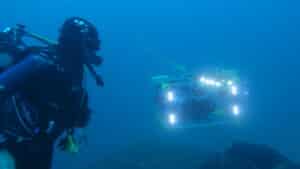
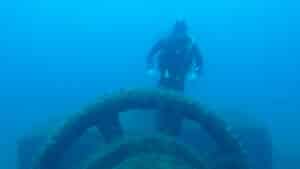
Well done to all the students for their achievements!
LinkedIn page “Mines Paris pour l’Océan”
![[LOW-TECH] UNDERSOLAR engineering project: a solar furnace for the Biot glassworks](https://www.minesparis.psl.eu/wp-content/uploads/2024/05/IMG_5843-scaled.jpg)
Mines Paris – PSL trains tomorrow’s engineers in sustainable practices, notably through the design of concentrated solar furnaces, in collaboration wi...